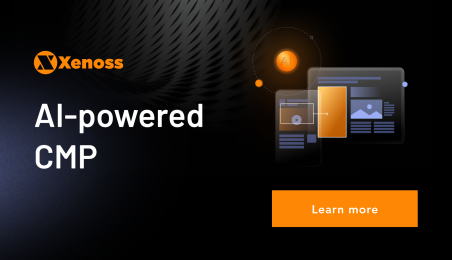Digital advertising is increasingly becoming a battleground for marketers who need to keep up with rapidly changing consumer sentiments and regulations. A recent global shift in digital privacy rules compels industry players to promptly look for new solutions to continue delivering. New AdTech tools come to the rescue in this turbulent environment, emerging and developing faster than ever. Dynamic creative optimization (DCO) and creative management platforms (CMPs) are rapidly gaining momentum today as the latest AdTech innovation promises to save millions on creative production costs.
Let’s find out if these tools can make a decisive change in how we produce, test, and optimize ads. Here’s what you will learn from this article:
- What is dynamic creative optimization, and why creating dynamic creative ads is suddenly a necessity?
- What is a creative management platform, what are its most valuable features, and what needs do they cover for DCO?
- Which dynamic creative optimization solutions are leading in the AdTech niche in 2022.
- DCO market size, growth forecast by 2030, and examples of DCO adoption by global brands.
How privacy changes are driving the need for advanced creative management
The early 2020s will most likely go down in the history of the Open Web as the time of drastic shift in digital privacy rules and regulations. Advertisers face imminent challenges with retargeting and attribution. They will have much less data on user response rates, on how often a user has viewed an ad, and will be deprived of various ad relevance metrics for optimization and identifying relevant audiences.
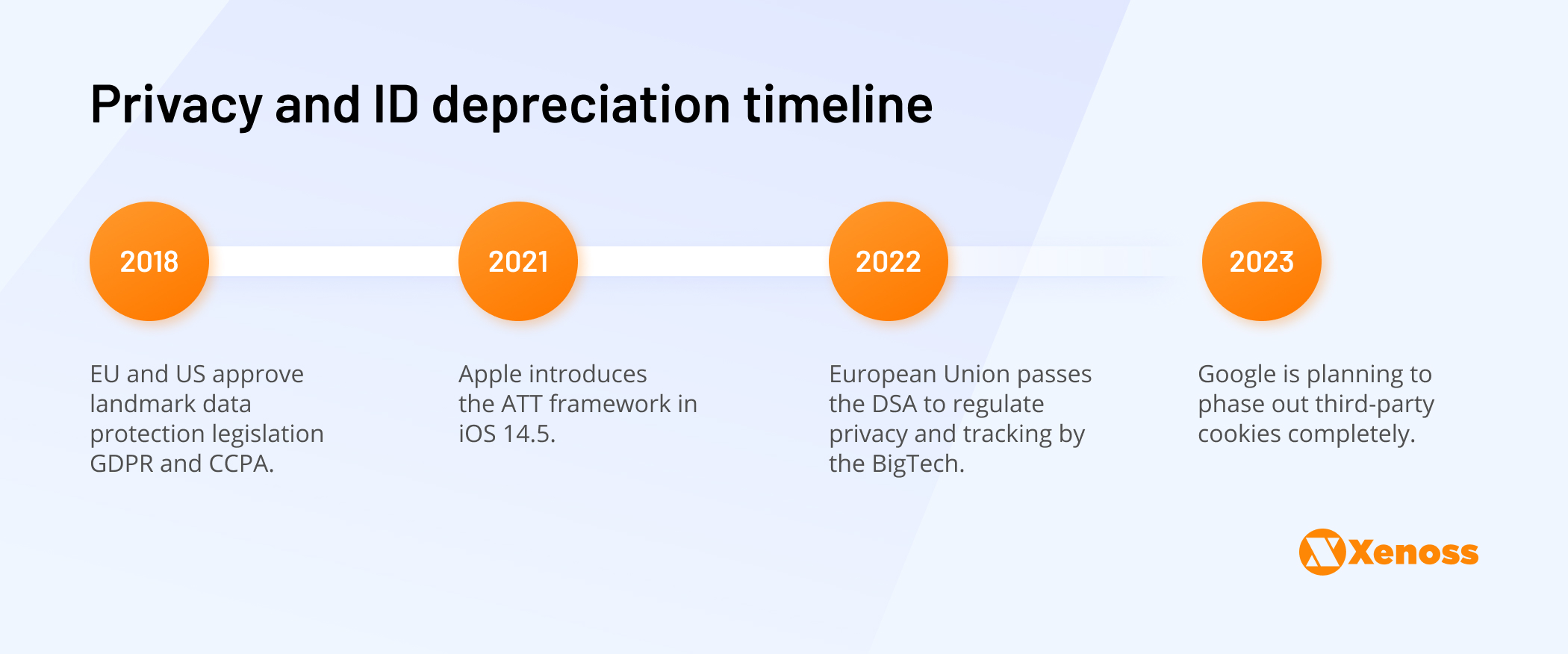
Some experts go as far as calling it “a battle over the future of the internet.” In recent years, legislative bodies of the EU and the U.S. have passed a number of major privacy and data collection laws, such as GDPR, CCPA, and DSA.
This new privacy framework prompted Big Tech to adjust its data collection and tracking infrastructure. Google is planning to completely phase out third-party cookies by late 2023 and is launching Google Privacy Sandbox for Android. Apple introduced the AppTrackingTransparency (ATT) framework in the iOS 14.5 update as a way for iPhone users to easily disallow tracking by different apps. To salvage targetability, the market is desperately looking for platforms to fix the mobile attribution and thus more cookieless solutions are emerging.
As it clearly looks like the internet privacy rules will continue to get tighter, marketers will have to rely on much broader targeting for their online advertising campaigns. This, of course, means higher costs and more effort to reach the target audience.
Disarmed and attenuated by phased-out advertising IDs and crippled targetability across major online platforms, marketers are increasingly shifting their focus to ad creatives optimization to effectively convert target customers across broader audiences.
Why scalable dynamic creative ads are the key
Deprived of the most effective targeting methods, marketers need super-resonant ads to cut through a broad audience and reach a relevant group. Therefore, the key is coming up with ad creatives able to connect with the target customers as quickly and efficiently as possible.
Shifting the focus to dynamic creative ad campaigns conducted with platforms to manage on-the-fly optimization can be a remedy. Dynamic ads—that are inherently scalable—support instant changes, allowing marketers to update dynamic ad campaigns in real-time while they provide rich trackability options for advanced analytics.
Multiple studies have shown that dynamic creatives significantly outperform static advertising. Dynamic creative optimization has proven to be a very effective instrument at cutting ad production costs and boosting the performance of the display, social and video ads. The implementation of DCO in ad campaigns allowed Nissan Europe to reduce creative costs by a factor of 9 and increase the performance of personalized ad content by 30%.
How dynamic creative optimization works
There is no better way to test ad creatives rapidly and at scale than dynamic creative optimization.
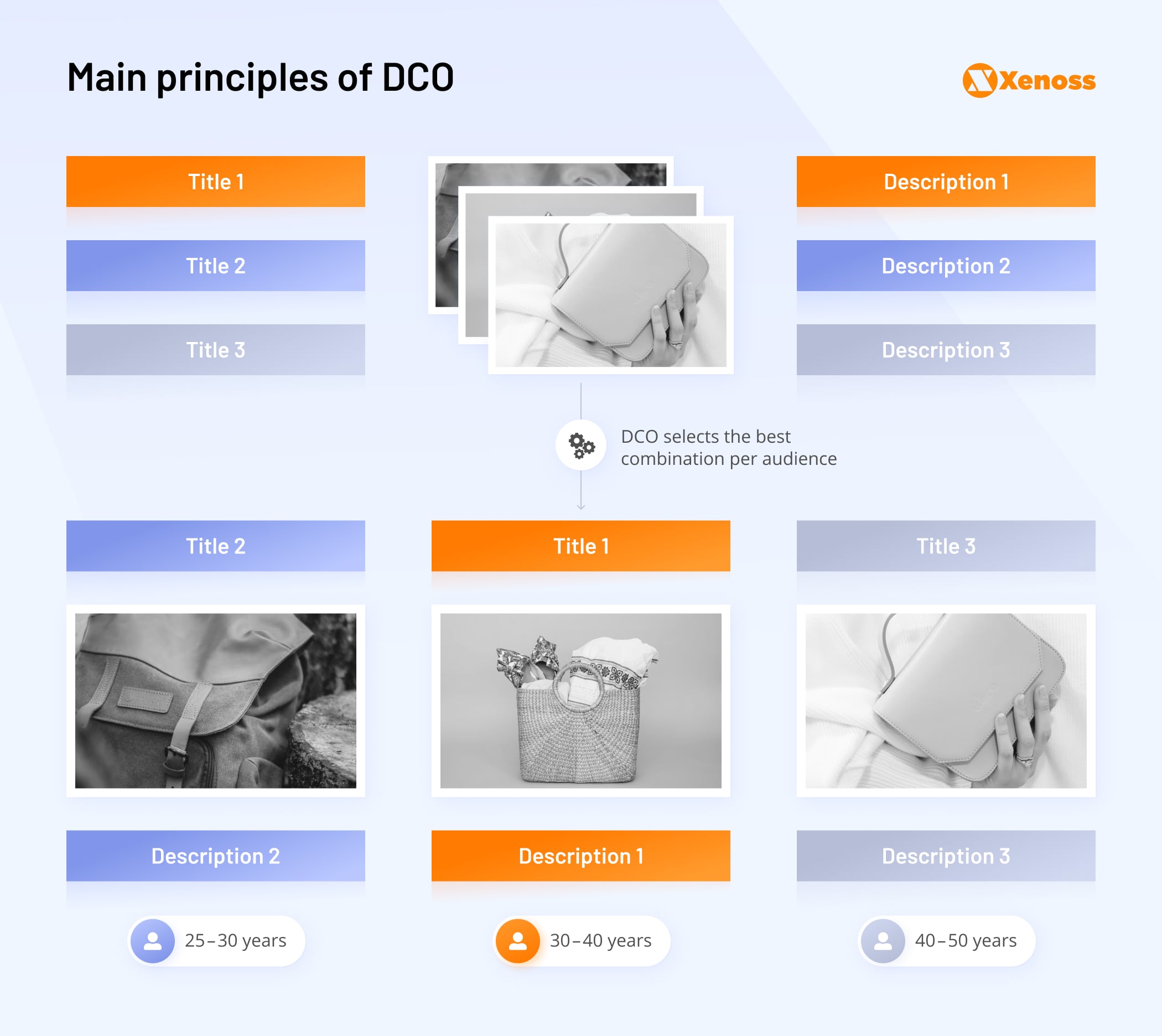
DCO solutions rely on the data about viewers available at the moment of serving the ad, such as information about pages viewed, products added to the card, forms submitted, etc. Using the same base for the creative, the technology dynamically changes its components, including images, texts, backgrounds, CTAs and other elements. The performance of each combination, compiled from different variables, is measured in real-time, enabling quick, automatic optimization.
Measuring the effectiveness of ads in real-time allows marketers to optimize and personalize the customer journey, offering consumers across the world tailored, branded content even without access to precise user information and targeting. Samsung achieved 20x improvement in ad spend, driving up the online and in-store purchases with hyper-local dynamic ads personalized to consumer preferences.
Achieving scale with a creative management platform (CMP)
Essentially, CMPs are platforms combining multiple digital advertising tools and technologies in order to cover all the aspects of dynamic creative optimization for marketers.
CMPs normally include an ad builder for users to create ads and ad components, a publishing solution with ad network integration to serve ads, as well as tools for real-time analytics, creative optimization, and other aspects of the DCO management process.
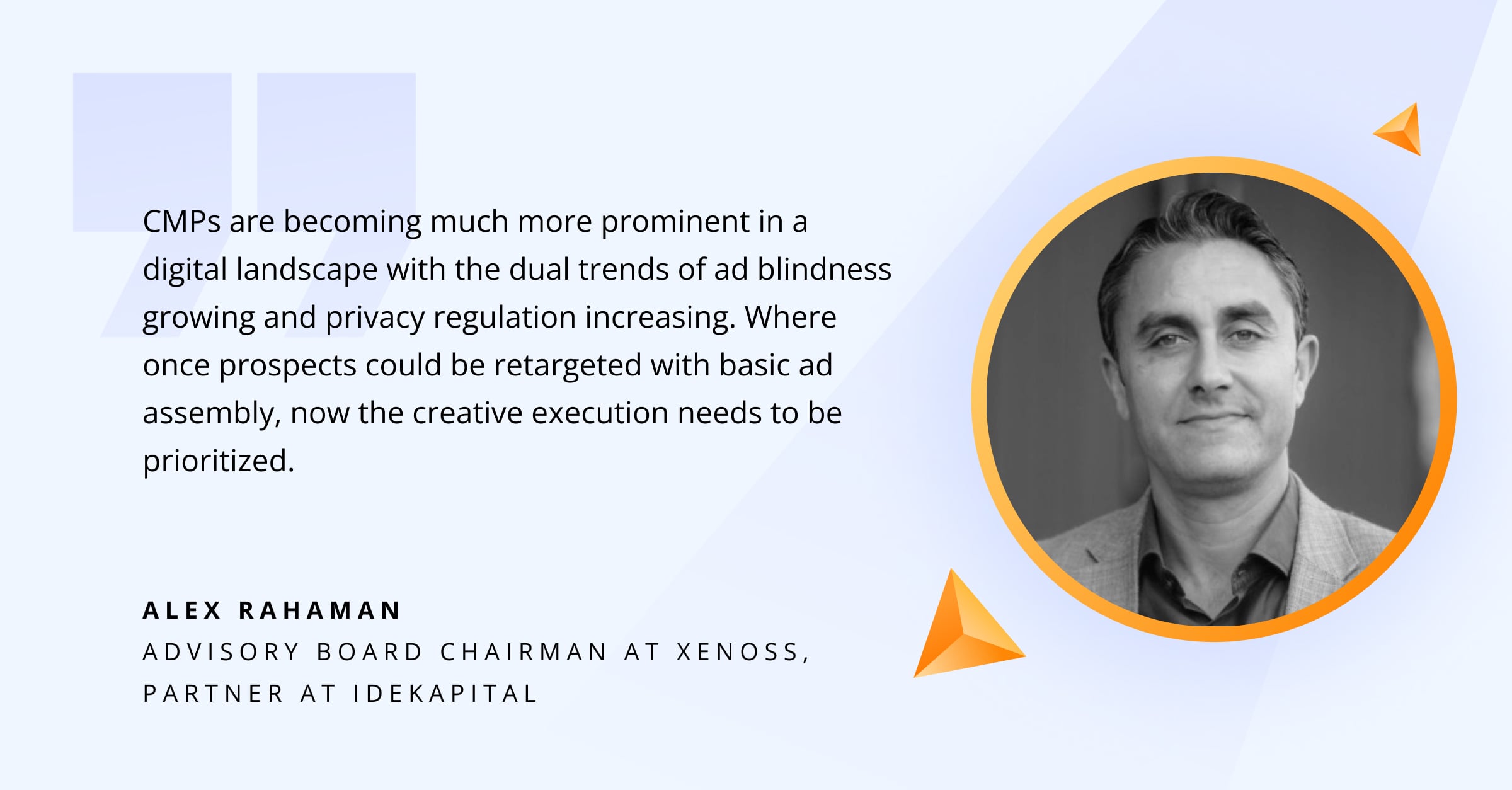
Why do you need creative management software for DCO?
Is it necessary to use a creative management platform to utilize the DCO techniques? Yes and no.
The most common problem with truly effective implementation of DCO at scale is that most marketers, brands, and AdTech vendors typically lack in-house capabilities for dynamic creative optimization. So CMPs have emerged, comprising various components needed for DCO implementation. In many ways, CMPs take the role of a production agency, helping clients to automate the production of dynamically optimized ads with minimal time and maximize their ROI.
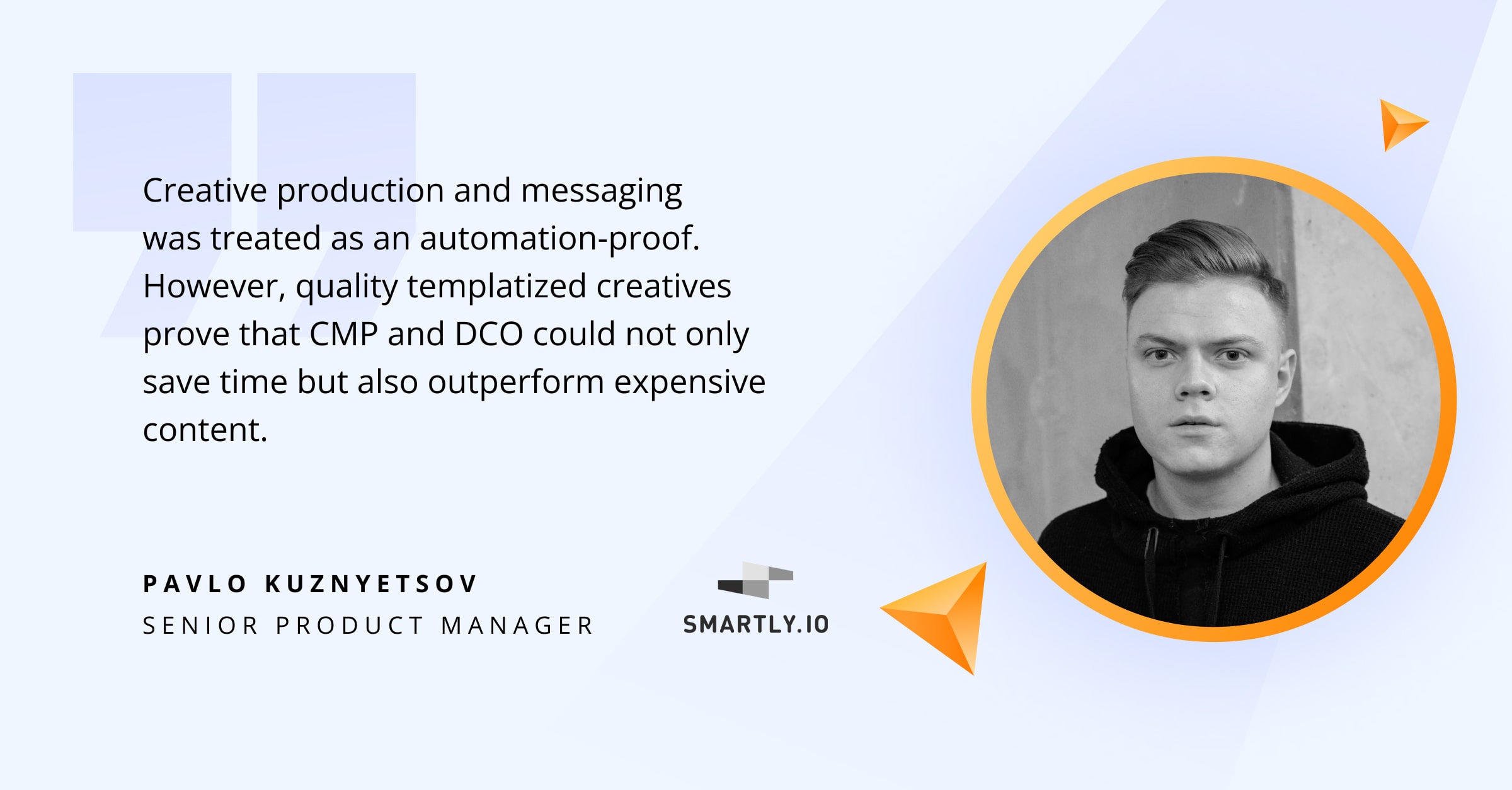
Creative management platform (CMP) vs. dynamic creatives optimization (DCO)
Even though the DCO and CMP concepts are commonly used interchangeably across various AdTech-related articles, these two terms are nonidentical.
- Dynamic creative optimization is a technological process to provide audiences with hyper-relevant ads through automated testing and optimization of multiple ad creatives.
- A creative management platform is an AdTech solution that comprises a selection of tools required for a DCO campaign, enabling users to design, produce at a large scale, test and optimize ad creatives to come up with the most audience-resonant options.
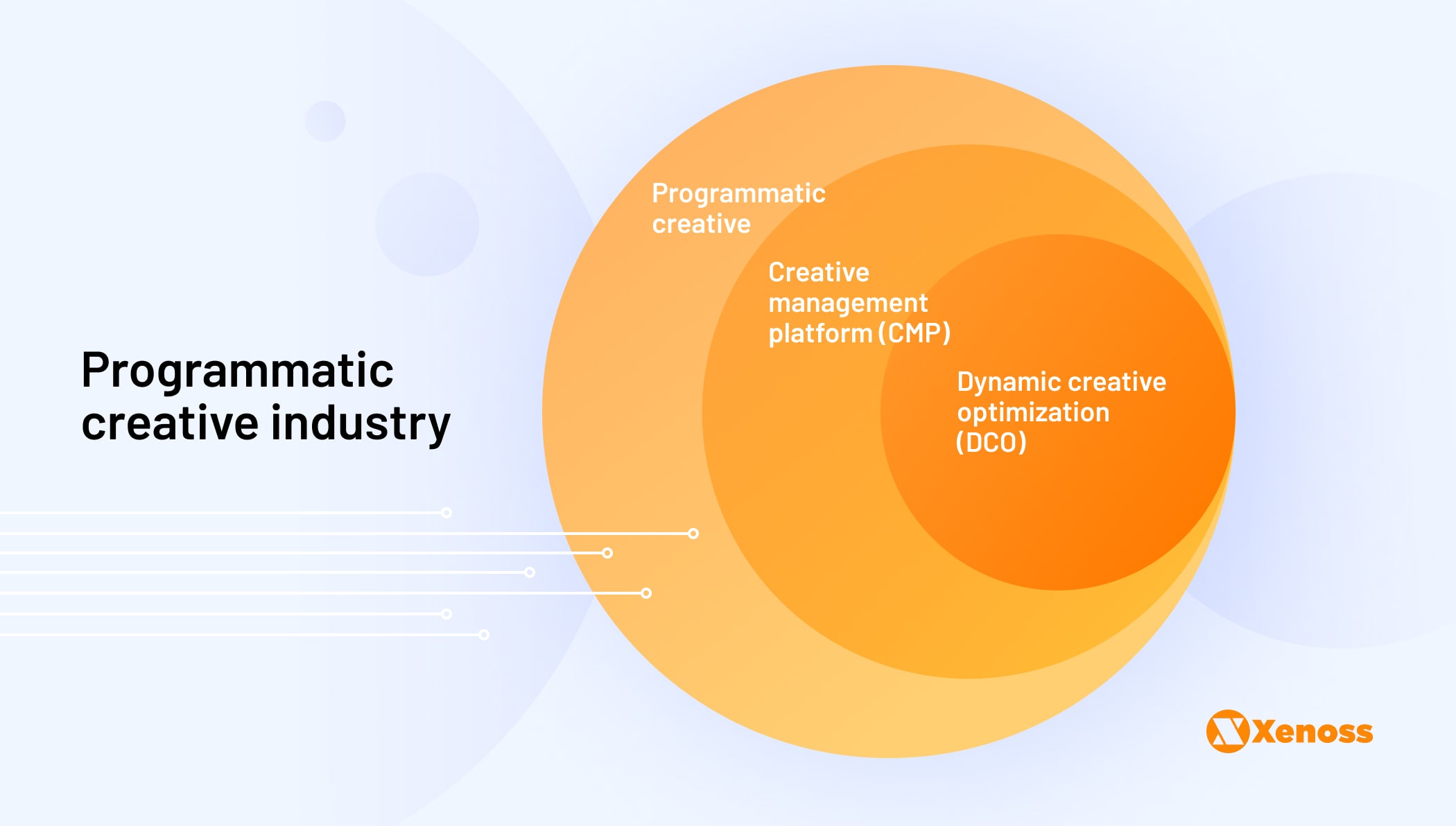
Technical complexity is another aspect that tells DCO and CMP apart.
- DCO is a code-heavy process. The implementation of DCO in-house requires interconnection and integration with many different components, such as data delivery and storage solutions, advertising platforms and other partner apps, analytical tools, etc. All these components need to exchange data and work together in real-time, which requires a lot of coding to set up.
- CMP usage is a code-free process. With creative management platforms, all the coding and technical work is already done and provided to users as a platform or web service solution.
In that way, CMPs are designed to simplify the DCO process for the market players and AdTech solution providers by allowing them to assemble dynamic creative ads without profound technical skills and coding.
That being said, not all creative management platforms on the market are the same. Individual CMPs may have very different components and technical capabilities like any other technological solution. Some of the more complex and sophisticated CMPs provide marketers with a variety of features not limited to just dynamic ad builders and testing solutions.
What are the must-have creative management tools?
In light of the above, let’s review the most important features any modern creative management platform needs to provide advanced DCO capabilities to its clients.
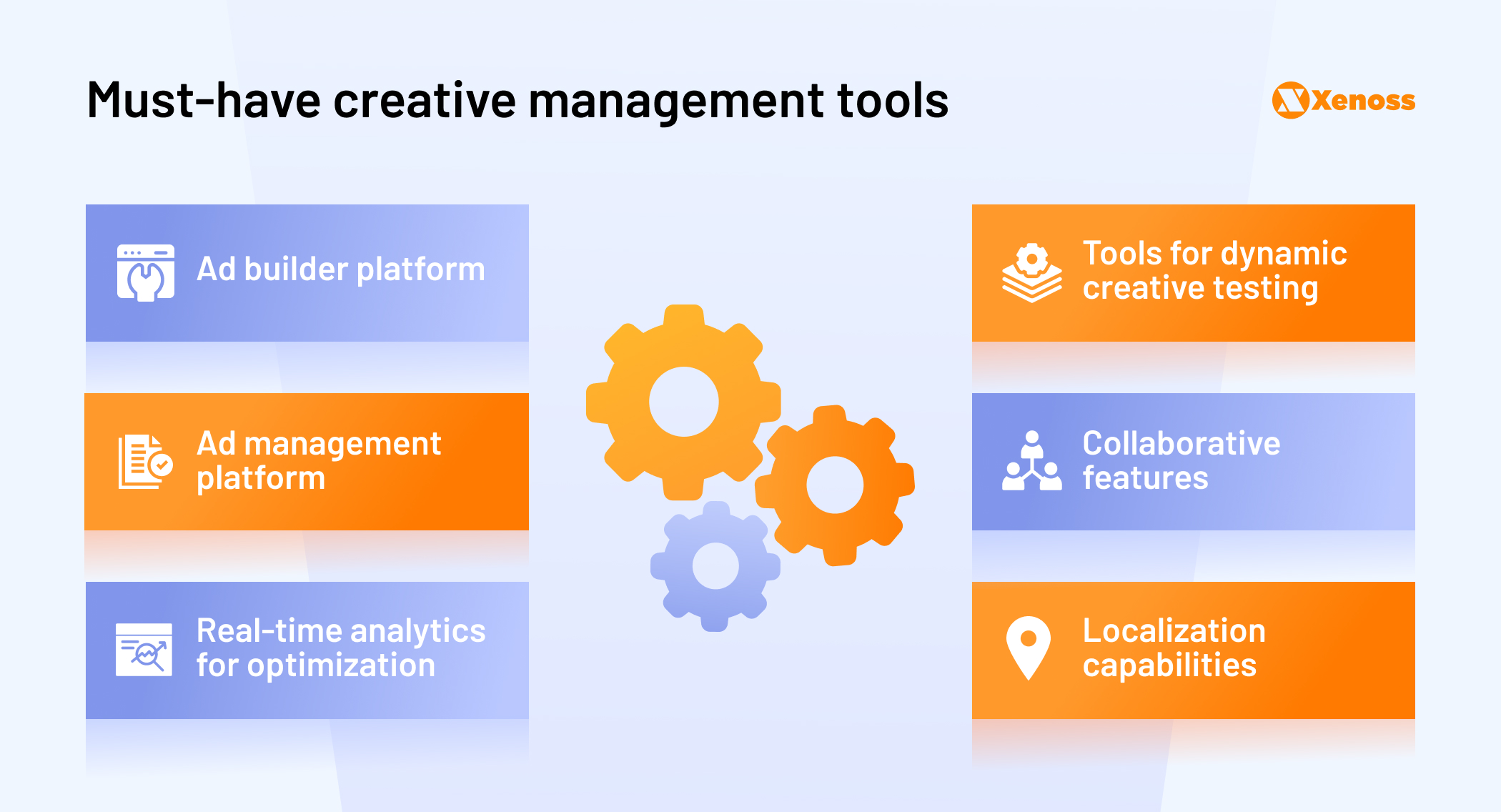
Ad builder platform
An ad creator component is a must-have core feature of any CMP. An ad builder platform should comprise a variety of tools and features that allow users to quickly and with minimum effort create multivariant digital ads.
Regardless of the ad technologies used, the quality of ad creatives is always the key to success. This is why an advanced ad builder solution needs to provide marketers with powerful and easy-to-use design toolkits. Modern ad creator platforms that are part of leading CMPs should include a variety of fonts, colors, videos, images, sounds, and other elements comprising a digital ad creative. Proper CMP will also include a selection of ready-made templates suitable for desktop and mobile platforms, various channels, and formats.
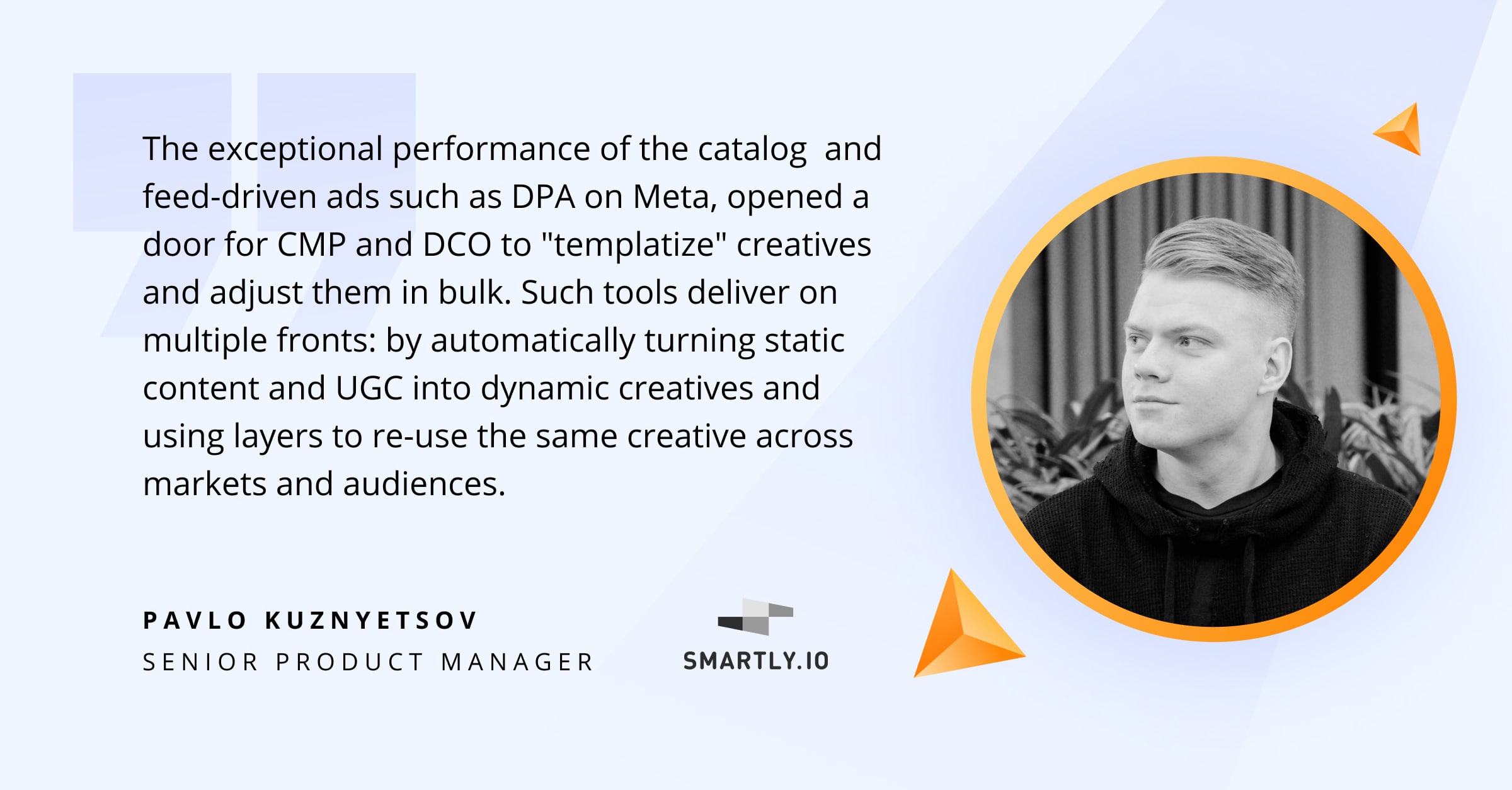
Let’s take Ad-Lib, a Smarly.io company, which Xenoss helped with the rollout of an AI-powered CMP. The platform provides users with built-in Creative Concepts containers that include a rich selection of ready-made templates for any major channel and platform. It includes a smart brief creation component with recommended brand guidelines, fonts, and other reusable assets and resources.
In addition, Ad-Lib’s CMP has an intelligent automation feature for video and social ads, helping their clients keep their creatives consistent across different formats.
Ad management platform
An ad management solution is another crucially important component of any CMP. The ability to rapidly produce and test ad creatives is the essence of a successful dynamic creative optimization process. This is why CMPs need to provide clients with a set of powerful, automated tools to manage multiple ads and campaigns across channels.
A CMP ad management should include the features for:
- Easily monitoring the campaigns.
- Reviewing the results.
- Synchronizing the campaign data with project management tools and other third-party solutions.
Additionally, modern CMPs must leverage real-time analytics to automate and scale ad production. With AI-based algorithms, a platform can collect information about design decisions and ad testing results, suggesting the best possible variant in real-time.
Marpipe CMP can be an excellent example of a powerful ad management platform. It includes automatic spend control and brand assets collection features, allows marketers to batch upload campaigns across multiple social media channels, and automatically duplicates and deploys ads to different audiences.
Real-time analytics solution
Data analytics is another keystone to success in dynamic creative optimization. Advanced CMP solutions cannot avoid the need to build real-time data analytics capabilities that would be able to process a large number of ad creatives throughout a variety of metrics.
Modern creative management platforms should provide live metrics for cross-platform campaigns. The most common metrics to analyze would be clicks, impressions, click-through rate, video views, ad frequency, cost-per-view, and others. Some CMP advertising solutions also allow users to create custom events to be tracked by the platform. Heatmaps provide marketers with data on how actively users interact with their ads, depending on the banner location.
Some of the most profound CMPs utilize the latest AI and ML technologies for real-time ad creative data analytics. When assisting Ad-Lib with developing their programmatic platform, the Xenoss team implemented AI models capable of automatically identifying attention catchers in images and cropping them for further use.
Additionally, the Xenoss team developed a custom video analysis module to analyze every video frame and automatically identify objects, people, text, and scenes. It adapts any video for multichannel advertising campaigns.
Ad creative optimization and automatic A/B testing tools
Smart ad creative optimization and A/B testing features go hand in hand with the data analytic capabilities of a CMP platform. Automation capabilities and ML algorithms enable quick production of new ad creatives at scale and help marketers identify and fix problems in poorly performing ads. When it comes to updating and changing ad creatives that are part of an active campaign, advanced CMP platforms allow users to relaunch the new versions automatically without creating another campaign manually.
For the Ad-Lib’s CMP, Xenoss employed automation not only to optimize the best-performing digital assets, but also fix the malfunctioning ads. Kyrylo Chistiakov, AI/ML Lead at Xenoss, elaborated on the specifics of this feature:
We’ve developed functionality that automatically replaces an image that doesn’t fit supported ad sizes with a thematically similar visual that matches the dimensions of the inventory automatically picking replacement from biggest CC image libraries relying on image-to-text, content tagging, and Google AI vision.
Zeta Programmatic’s CMP also utilizes a complex combination of algorithms for identity data and real-time analysis to measure performance, create actionable insights across the ad campaign lifecycle, and even provide users with real-time customer visualization info.
Collaboration features
It is also crucial for creative management platforms to incorporate a rich set of collaboration features available as part of the CMP. Eliminating the need to use third-party tools in dynamic creative optimization saves advertisers time and significantly speeds up ad production.
Collaboration capabilities should enable users from different teams to easily access all creative materials in one place, make changes, comment, discuss ad creatives, and share work with each other.
Various CMPs can have different approaches to collaboration functionalities. Celtra CPM provides global teams’ accounts with multilevel permissions. Account admins can assign specific stakeholders different roles with varying permission levels. Celtra also makes it easy for users to collaborate with third-party agencies and external partners who can comment on creatives directly in the platform preview environment.
Localization capabilities
Finally, to support an effective dynamic reactive optimization process across global markets, CMPs should have built-in translation and localization management tools. This way, marketers can quickly produce and deliver ad creatives tailored and optimized for their target consumers in multiple countries and regions.
Many modern CMPs incorporate automatic translation features. Smartly, for example, has quite a powerful localization component, helping users to quickly generate variations of ad creatives in multiple languages aimed at different audiences.
DCO advertising market 2022
As Blake Mosely, Head of Product at Hogarth Worldwide, accurately points out, dynamic creative optimization is not exactly a new concept, and, in various forms and approaches, it has been utilized by marketers for a number of years now. It was, however, primarily used in several specific industry sectors and niches (travel and automotive are some of them) and predominantly for banner advertising. Today, powered by continuously evolving automation technologies, the adoption of DCO and creative management platforms is growing across markets, formats, and channels.
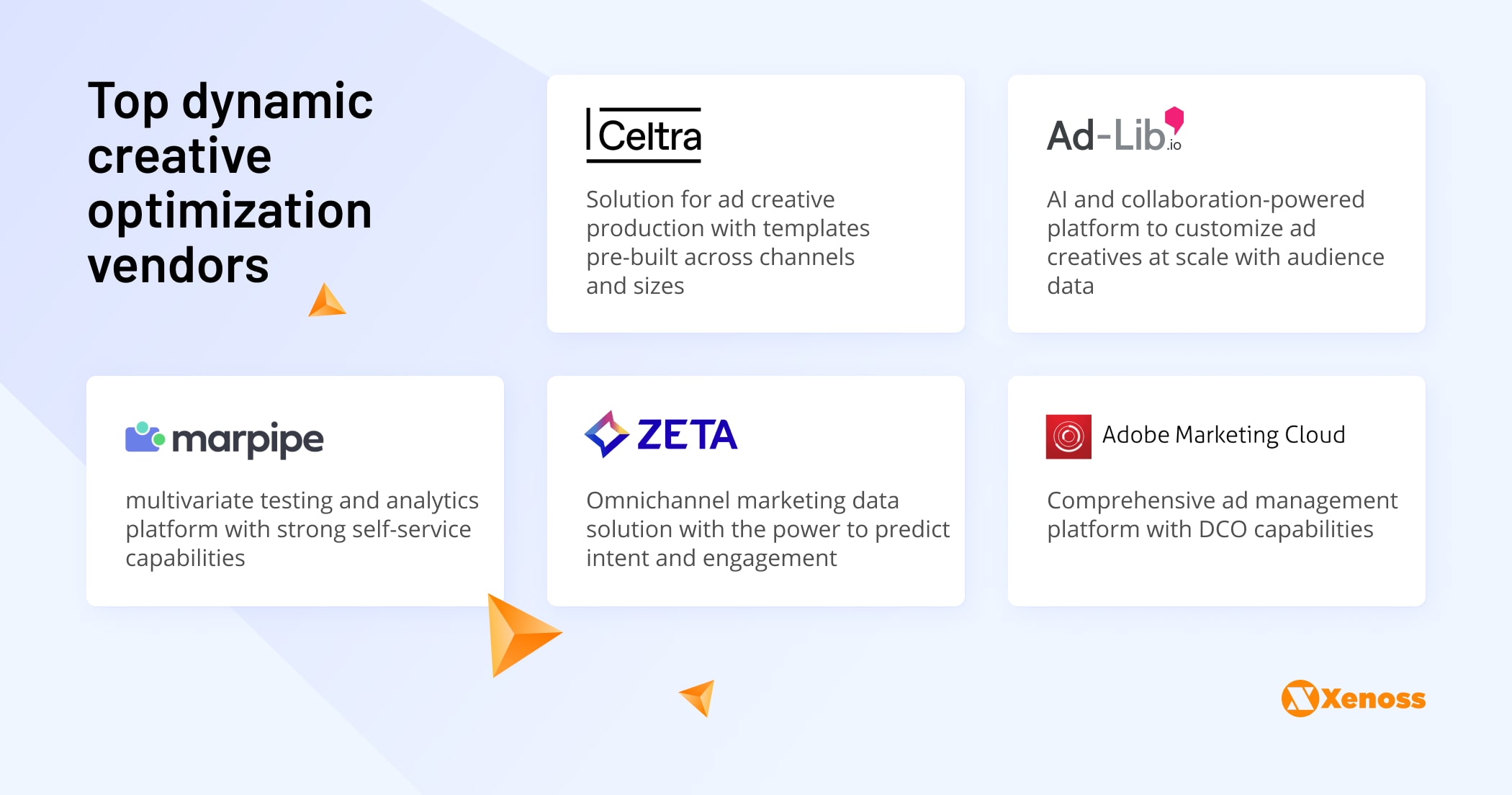
According to a new industry study, the global CMP market is projected to reach $1.77 billion by 2027, growing from $865 million in 2022. A Transparency Market Research report indicates that the rising consumer shift toward personalized and customized products should propel the rapid expansion of the DCO market during the 2020-2030 period. According to the report, the e-commerce sector has mostly benefited due to the pandemic, and the expansion of the e-commerce industry and retail media advertising should also fuel DCO market growth.
One factor that is expected to negatively affect the DCO market growth during the 2020-2030 period is lack of awareness about the features and benefits of dynamic creative optimization, especially among small online retailers across the globe.
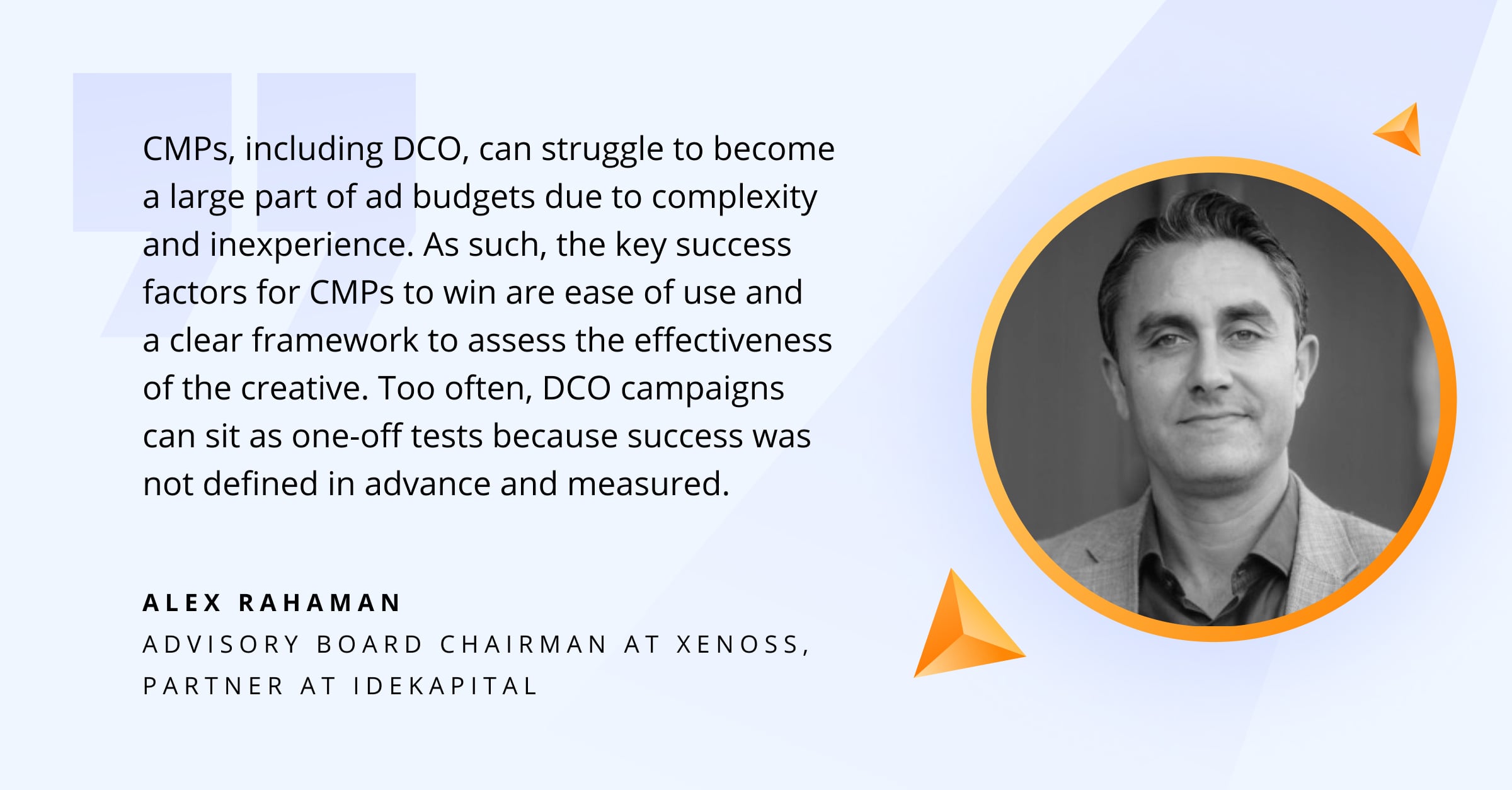
Meanwhile, global brands continue to increasingly adopt DCO technologies in their online marketing campaigns. Mercedes-Benz used DCO solutions to raise the quality of leads acquired via personalized ads and cut down the costs per lead by 65%.
The adoption of AI-powered dynamic creative optimization in CTV advertising, one of the fastest growing segments of the digital ad market today, is still at its early stages and expected to grow in the following years along with the CTV ad budgets.
As Oz Etzioni, CEO of Clinch creative platform, has pointed out, many advertisers still don’t realize that DCO technologies can be effectively integrated with CTV ad campaigns alongside.
Takeaways
Tightening digital privacy rules deprive marketers of the most precise audience targeting techniques. Having no other choice but to appeal to relevant people within much broader audiences, advertisers need to adopt dynamic creative optimization as a way to personalize and optimize ad creatives on the fly.
DCO is a complex and code-heavy process that requires a combination of ML-based algorithms, real-time analytics, automated A/B testing, and powerful ad design instruments. CMPs are designed to simplify DCO for the market players by comprising all AdTech components in one easy-to-use platform.
Truly powerful CMPs must combine all DCO-enabling tools as part of a single, no-code solution. As the adoption of DCO solutions across digital ad formats is soaring, the global DCO market is projected to double in size by 2028, reaching $1.2 billion by 2028.

